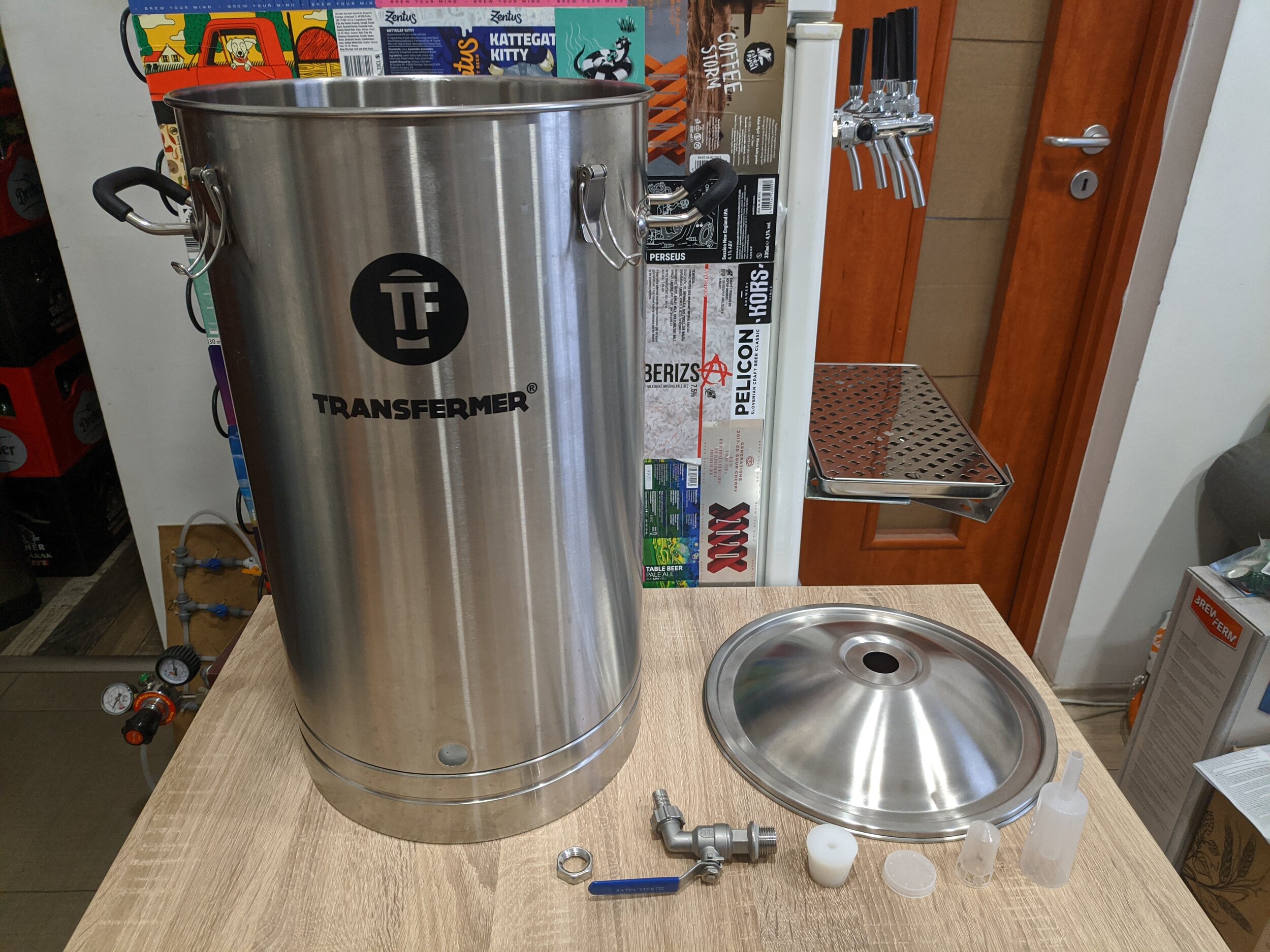Disclaimer
I do not have any affiliation to the company producing the Transfermer. I bought the reviewed item on my own money for personal use. The review is not shared with anybody before the publication on this site.
The article contains my own unbiased opinion about the product and I did not get any compensation from anybody to write it.
Introduction
What advantage can a stainless steel container have compared to its much cheaper plastic and glass counterparts? There are multiple reasons why many people switch to ss containers, including myself. One of the most important advantage of them is that with good cleaning they will last forever. This makes them highly resalable or a good family heirloom. Compared to plastic fermenters, they are harder to scratch and can be cleaned more easily. Compared to glass, they are not prone to shatter, which can prevent injuries. The biggest disadvantage they have is the price. Luckily in the last years a few, more budget friendly products were released to the market.
Description
The Transfermer is a budget stainless steel fermenter. The dimensions are 380 x 420 x 575 mm (l x w x h) with 4.4kg for weight and 35liters maximum capacity. The product is made from 304 grade stainless steel, with silicon o-rings.
When you unbox the package, you get a 1/2" stainless steel drain valve with the provided nut. A domed lid, which has silicone seal and can be attached to the body with 4 clamps. There is also a 3-piece airlock and a silicone bung.
The hose barb can be detached from the valve, to make cleaning easier.
In the inside there are graduated volume marks both in liters and gallons. These markings are going from 5 to 30 liters, which is more than enough for a standard 5 gallon batch.
To test out the volume markings I poured 15 liters of water into the Transfermer. As you can see the water level was at exactly the 15 liter marking.
To cross-check it, I poured the water into a plastic fermenter, which I know has precise markings. The water level was again, at the 15 liters mark.
The bottom is domed which helps collecting the trub. This can result in a cleaner beer, however this is not as effective as a conical fermenter and you can’t gather yeast easily.
Experince
The first brew had a distinct metallic taste and smell to it and the notorious black krausen paid a visit too. This was unexpected as I did a passivation before brewing. To fix this problem I did a 10% citric acid (by weight of composition) passivation, which did not solve the issue. While doing the second passivation I contacted the support of the local shop and the European retailer (the QR code on the box is redirecting to them). The local shop didn’t even reply to my email and the European retailer was unable to help. At this point I considered asking for a refund, but I gave them a few more tries and after 2-3 beers and even more passivation the metallic taste and smell went away. Since then I had no issue using the Transfermers.
In my experience the bottom is deep enough to gather all the trub of a standard 20 liter (5 gal) batch.
Conclusion
I think the Transfermer is a good product, however the issues with the passivation ruined a considerable amount of beers. I don’t know what was the issue, but if you want to buy this product prepare a heavy passivation plan. As this is a cheaper product I did not expected good support, but what I got was miserable at best. Either buy from a shop which you can trust to help you in case of an issue or prepare dealing with them yourself. Even with these drawbacks I can recommend the Transfermer as it’s the best bang for the buck (at least in Hungary) regarding stainless steel fermenters with such capacity.







